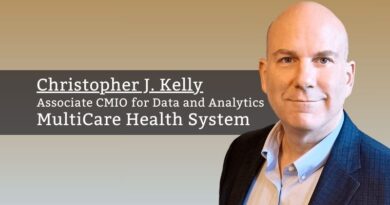Developing Cultural Intelligence: Inclusive Leadership
By Joseph Bynum, Director of Imaging Services, Northwell Health – Peconic Bay Medical Center
What are the prevailing conditions of your work environment?
As a director of imaging services in Long Island for NY state’s largest health system, I serve amongst passionate facilitators in a workshop entitled, “Developing Your CQ: Cultural Intelligence. The goal of this workshop, which I have constructed to target senior leadership and front-line managers, is to educate all leaders within the health system to foster an inclusive work environment. Raising the CQ of leaders will further propel equity, diversity, and inclusivity through utilizing the tools for culturally intelligent leadership in the workspace and across the health system. The future of EDI as a core strategy is intertwined with a leader’s ability to translate cultural experience and differences with organizational success. Aspiring inclusive must brace themselves to passionately enter all platforms of social exchange to exhibit cultural competence and influence. By forging connectivity among employees, an inclusive leader will enable all to share their uniqueness, feel value in their workplace, and intrinsically step forward as team contributors.
CQ picks up where the standardized emotional intelligence attributes end. Emotional intelligence (EQ) is a construct developed to help a leader identify and regulate their emotions to thereby understand the emotions of others. On the other hand, CQ focuses more on a leader’s ability to relate and thrive in diverse work environments. The HBR article, “Cultural Intelligence” defines it as, “an outsider’s seemingly natural ability to interpret someone’s unfamiliar and ambiguous gestures the way that person’s compatriots would” (Earley and Mosakowski, 2004). Inclusive leaders must immerse themselves in a diverse environment of individuals and appeal to their unique identities, perceptions and behaviors that are constructed by social strongholds. Senior leadership sets organizational goals that require the expectation of social norms and behaviors that will foster an inclusive environment, which must then be outlined in institutional values and commitments. Front-line managers on a departmental level are tasked with engaging diverse backgrounds and perspectives of their staff to leverage enhanced learning and performance outcomes.
Leadership is a courageous position that requires you to identify the one silently crying out in the wilderness of acceptance.
In the movie The Wizard of Oz, there were three characters that needed a brain, courage, and heart from the great wizard. The Scarecrow, Lion, and Tin Man resemble senior leaders or front-line managers searching to develop CQ. Three key areas that must be fostered to enhance the CQ of an inclusive leader: the head, body, and heart. Leadership is an action, not a position; it necessitates consistently articulating and modeling desired behaviors to foster an inclusive work environment. I offer you the opportunity to look within yourself and see the untapped potential to lead with all three appendages.
An inclusive leader can develop their CQ by first understanding, “rote learning about the beliefs, customs, and taboos of foreign cultures, the approach corporate training programs tend to favor, will never prepare a person for every situation that arises, nor will it prevent terrible gaffes” (Earley and Mosakowski, 2004). When leading diverse teams, your cultural agility will be tested in cross-cultural settings. Know who you are. Don’t pretend to be a part of another entity’s culture. Be ok with being different but interact in a respectable manner. In an effort to invest in team members, I implemented a campaign called, “Who am I?” which provides a platform for team members to share the unique path that has shaped them today. The “Who am I?” campaign was established to empower all to speak their truth directly and transparently. This fosters a unique community in which all have a deeper understanding and newfound respect for colleagues.
CQ is developed when leadership raises their awareness of the non-verbal cues of a diverse team of employees to ensure a consensus of inclusion is met. The challenges faced by employees entering institutions or even a team meeting can be seen when in-depth decision-making occurs. Status cues are evident, “when people feel that their membership in an identity group [such as gender, race/ethnicity, disability status, sexual orientation, religion, functional background, education] puts them at a disadvantage within the workgroup” (Nishii, 2022). To ensure all voices are heard in the room of stakeholders, set up an agreement to which all voices can be heard. Some examples of inclusive environmental discussion are no-interruption rule, silent voting, and determining how team process improvement will be appraised. Leadership is a courageous position that requires you to identify the one silently crying out in the wilderness of acceptance. An inattentive eye and self-awareness of body gestures and how you maneuver through conversation determine the level of engagement of all members.
Emotional intelligence would implore a leader to filter his emotions to engage professionally in a work setting. My advice is not to let the heart strain out the feelings that motivate inclusive cultural connection. Is the goal only to meet the inclusion standard of employee acceptance, assimilation, and acknowledgment? Your heart will indicate the area of vulnerability in the workgroup to press forward in fostering an inclusive climate of belonging and value as contributors. If an employee must minimize what makes them unique to avoid feeling like an outsider, you have diversity in the room but not inclusion. The role of an inclusive leader is to foster an environment of transparency amongst members to speak candidly. Inclusive leaders are front-runners of compelling directions that lead to openness and acceptance within an organization. The purpose of leading others is to, “develop a shared understanding of the team’s goals and align each member’s contribution towards those goals” (Nishii, 2022). We are all motivated and passionate about our uniqueness and equally so for leaders who have a heart for the people.
The relevance of developing CQ is echoed in each workshop we facilitate to senior leadership when sharing that equity, diversity, and inclusion cannot fail at the top. Furthermore, we equally reiterate to all front-line managers their influence on providing clear goals and expectations. You have the power to shape your team’s work environment.



